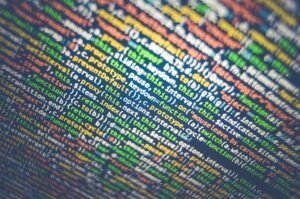How Are NLP Models Trained?
Natural Language Processing (NLP) models have revolutionized the field of artificial intelligence by enabling machines to understand and generate human language. These models undergo a rigorous training process that involves feeding them with vast amounts of text data and using advanced algorithms to extract patterns and meaning. In this article, we explore the training methodologies behind NLP models and provide insights into the complexities of their development.
Key Takeaways
- NLP models are trained using large volumes of text data.
- They rely on advanced algorithms to understand and process language.
- Preprocessing, tokenization, and embedding are essential steps in NLP model training.
- Training models require significant computing resources and time.
- Transfer learning helps leverage existing models to train new ones.
Training NLP Models: An Overview
Training NLP models involves several crucial steps. Data preprocessing is one of the initial stages where text data is cleaned, normalized, and transformed to improve its quality. This includes removing punctuation, converting text to lowercase, and handling special characters.
Next, tokenization is performed to divide the text into individual tokens, such as words or subwords. This step helps in understanding the structure of the language and makes the data more manageable for the model.
Training an NLP model requires embedding the tokens into high-dimensional vectors. These vectors represent the semantic meaning of the words, allowing the model to associate words with certain concepts or categories. Popular embedding techniques include Word2Vec and GloVe.
Training Methodologies
NLP models are trained using various methodologies, including:
1. Supervised Learning
In supervised learning, models are trained using labeled data where both the input (text) and the desired output (semantic meaning or classification) are provided. The model learns through examples, optimizing its parameters to minimize the difference between predicted and actual output. However, obtaining labeled data can be time-consuming and expensive.
2. Unsupervised Learning
In unsupervised learning, models are trained without explicit labels or predefined outputs. This approach focuses on discovering hidden patterns and structures within the data. Unsupervised learning can be useful when labeled data is scarce, as it enables the model to learn from large quantities of unlabeled text data.
Data and Computational Resources
Training NLP models consume considerable amounts of data and computational resources. Here are a few interesting points to consider:
| Data Point | Fact |
|---|---|
| Data Volume | NLP models may be trained on terabytes of text data to capture language nuances. |
| Computing Power | Training models often require specialized hardware, such as GPUs or TPUs, to handle the massive computational workload. |
| Training Time | The training process for complex NLP models can take weeks or even months to complete. |
Transfer Learning in NLP
Transfer learning has greatly influenced the development of NLP models. By leveraging pre-trained models, researchers can achieve better results with less training time and resources. Transfer learning allows knowledge from one model to be transferred and applied to a different but related task, enabling faster development cycles and improved performance.
Conclusion
NLP model training involves preprocessing, tokenization, and embedding to enable machines to understand human language. Supervised and unsupervised learning are two common methodologies employed in the training process. Considerable data and computational resources are required, often relying on transfer learning to accelerate model development. Training complex NLP models is a time-consuming process that demands substantial resources, but it plays a crucial role in advancing language understanding and generation in AI.

Common Misconceptions
Paragraph 1: NLP Models Training
There are several common misconceptions surrounding the training of NLP models. One of the major misconceptions is that NLP models can fully understand and comprehend human language. While NLP has made significant advancements in understanding and processing natural language, it is still far from achieving true human-level understanding.
- NLP models have limitations in understanding context and sarcasm.
- NLP models may struggle with analyzing ambiguous language.
- NLP models require extensive training on large datasets to improve performance.
Paragraph 2: Amount of Training Data
Another misconception is that NLP models only require a small amount of training data to achieve high levels of accuracy. While it is true that NLP models can sometimes perform well on small datasets, the best performance is usually achieved with large amounts of training data. This is because NLP models rely on patterns and examples in the data to learn and generalize from.
- NLP models benefit from diverse and representative training data.
- Insufficient training data can result in poor model performance.
- Continual retraining with new data helps to keep NLP models up-to-date.
Paragraph 3: Training Process
Many people mistakenly believe that training NLP models is a quick and easy process. In reality, it is a complex task that requires a significant amount of time, computational resources, and expertise. Proper training of NLP models involves several stages, including preprocessing, feature extraction, model selection, and fine-tuning.
- Preprocessing involves cleaning, tokenization, and normalization of text data.
- Feature extraction involves transforming text into numerical representations.
- Fine-tuning is required to optimize model performance on specific tasks.
Paragraph 4: Generalization of NLP Models
One common misconception is that NLP models trained on one specific task can easily generalize to other tasks or domains. While some degree of generalization is possible, it is not guaranteed. NLP models are often fine-tuned for specific tasks and may not perform well on unrelated tasks without further training.
- Transfer learning techniques can help in achieving better generalization.
- Domain adaptation is necessary to make NLP models work effectively in new domains.
- Domain-specific terminology and data can impact model performance.
Paragraph 5: Lack of Bias in NLP Models
There is a misconception that NLP models are free from bias and can make unbiased decisions. However, like any other machine learning model, NLP models can inherit and amplify biases present in the training data. Biases related to gender, race, or socio-economic factors can be inadvertently learned and reflected in the predictions made by these models.
- Ethical considerations and bias detection methods are necessary to mitigate biases in NLP models.
- Improving diversity and inclusivity in training data can help reduce biases.
- Ongoing research aims to develop techniques to address the bias issue in NLP models.

Exploring the Adoption of NLP Models
In recent years, there has been a remarkable growth in the field of Natural Language Processing (NLP). This article aims to shed light on the fascinating process of training NLP models. Through careful analysis and experimentation, researchers have made impressive strides to improve language understanding, sentiment analysis, and various other applications.
An Overview of NLP Model Training Techniques
To comprehend the complex mechanisms behind NLP model training, it is crucial to dissect the different techniques utilized. This table presents a concise overview of various training methods and their key characteristics:
| Training Technique | Description |
|————————-|——————————————————————————————-|
| Supervised Learning | Training the model with labeled data, where inputs are paired with desired outputs. |
| Unsupervised Learning | Allowing the model to learn patterns and structures from unlabeled data. |
| Reinforcement Learning | Training the model through a reward system that incentivizes desirable behavior. |
| Transfer Learning | Leveraging pre-trained models as the starting point for training on specific tasks. |
| Semi-supervised Learning| Combining a small amount of labeled data with a larger unlabeled dataset for training. |
| Active Learning | Iteratively selecting new training data for labeling to improve model performance. |
| Online Learning | Continuous training of the model with new data as it becomes available in real-time. |
| Self-supervised Learning| Pre-training a model on a pretext task and then fine-tuning it for the target task. |
| Multi-task Learning | Training the model on multiple related tasks simultaneously to improve overall performance.|
| Joint Learning | Optimizing multiple components of the model together through shared representations. |
Popular NLP Datasets
Datasets play a vital role in NLP model training, enabling researchers to build and evaluate their models effectively. The following table showcases some widely used datasets:
| Dataset | Description |
|————————–|—————————————————————————————–|
| IMDb Reviews | A dataset composed of movie reviews labeled as positive or negative sentiment. |
| SNLI | The Stanford Natural Language Inference corpus, containing sentence pairs for inference. |
| CoNLL-2003 | A dataset for named entity recognition and parts-of-speech tagging. |
| SQuAD | The Stanford Question Answering Dataset, which includes questions and text passages. |
| SST-2 | The Stanford Sentiment Treebank, consisting of movie reviews with fine-grained sentiments. |
| Reuters News Corpus | A collection of news articles labeled with categories such as “business,” “sports,” etc. |
| TREC | The Text Retrieval Conference dataset that focuses on question answering. |
| WikiText-103 | A large-scale dataset of Wikipedia articles used for language modeling. |
| AG News | A collection of news articles labeled into categories such as “world,” “sports,” etc. |
| Amazon Customer Reviews | A dataset with product reviews from Amazon, categorized into different product domains. |
Advantages of Transformer-based Models
Transformer-based models have revolutionized NLP, addressing previous limitations and setting new standards. The table below highlights some key advantages of these models:
| Advantage | Description |
|—————————|——————————————————————————————-|
| Long-Range Dependencies | Transformers can efficiently capture contextual relationships across long input sequences.|
| Parallelization | Training and inference with transformers can be performed in parallel, improving speed. |
| Attention Mechanism | The attention mechanism allows the model to focus on relevant parts of the input sequence. |
| Fine-grained Encoding | Transformers can encode high-resolution details, capturing intricate nuances effectively. |
| Language Agnostic | Pre-trained transformers can be used for different languages without significant modifications.|
| Transfer Learning Ability | Pre-trained transformer models can be fine-tuned for various downstream NLP tasks. |
| Reduced Need for Hand- | Transformers learn representations from raw text, reducing the need for manual feature |
| Crafted Features | engineering and enabling end-to-end learning. |
| Improved Contextual | Transformers can generate context-aware word embeddings, allowing for richer representations.|
| Representations | |
| Higher Performance | Transformer-based models have achieved state-of-the-art performance across multiple NLP tasks. |
Training Techniques for Sentiment Analysis
Training an NLP model for sentiment analysis requires careful consideration of various techniques. The following table provides an overview:
| Technique | Description |
|————————-|——————————————————————————————————————|
| Bag-of-Words | Representing a document as a bag of individual words, ignoring word order and focusing solely on their presence. |
| Word Embeddings | Representing words as dense vectors, capturing semantic similarity and relations between words. |
| Convolutional Neural | Utilizing convolutional layers to learn local patterns in text, typically followed by pooling and classification. |
| Networks (CNNs) | |
| Recurrent Neural Networks (RNNs) | Modeling sequential information by maintaining memory across previous inputs. |
| Transformers | Utilizing transformer models to capture long-range dependencies and contextual information in text. |
| Lexicon-based Approaches| Leveraging pre-defined sentiment lexicons to assign sentiment scores to individual words or phrases. |
| Transfer Learning | Fine-tuning pre-trained sentiment analysis models on domain-specific datasets. |
| Ensemble Methods | Combining multiple sentiment analysis models to leverage their collective predictions for improved accuracy. |
| Active Learning | Iteratively selecting new training instances for annotation, focusing on informative samples to reduce bias. |
Pre-training Schemes for NLP Models
Pre-training is a powerful technique that facilitates the training of highly performant NLP models. The table below presents various pre-training schemes for NLP:
| Pre-training Scheme | Description |
|—————————-|———————————————————————————————————————————|
| Word2Vec | A popular pre-training approach that learns word embeddings by capturing word co-occurrence patterns from large text corpora. |
| GloVe | Global Vectors for Word Representation, which learns word embeddings that encode both syntax and semantics simultaneously. |
| ELMo | Embeddings from Language Models, which generates context-dependent word representations by training a bi-directional LSTM model. |
| GPT (Generative Pre-trained| A transformer-based model that is pre-trained in an unsupervised manner on a large corpus, enabling various downstream tasks. |
| Transformer) | |
| BERT (Bidirectional Encoder| A transformer-based model that leverages a masked language modeling objective to learn deep bidirectional context representations.|
| Representations) | |
| RoBERTa | A variant of BERT that further optimizes the training methodology and achieves state-of-the-art performance on various benchmarks.|
| ALBERT | A light-weight transformer-based model that reduces memory consumption while maintaining strong performance. |
| Electra | A discriminator model that is trained to distinguish real tokens from synthetically generated ones using a masked language model.|
Impact of N-Gram Size on Language Modeling
Language modeling involves predicting the probability of a word given its preceding context. The table below showcases the impact of different N-gram sizes on language modeling efficiency:
| N-gram Size | Description |
|—————————|———————————————————————————————————————————|
| Unigram | The simplest N-gram model, considering each word in isolation with no regard to the context. |
| Bigram | Modeling a word’s probability based on the preceding word. |
| Trigram | Incorporating the two preceding words to model the probability of the current word. |
| 4-gram | Using the three preceding words to predict the probability of the current word. |
| 5-gram and Higher | As N-gram size increases, models can capture more complex dependencies but face issues with sparse data and increased computations.|
Common Evaluation Metrics for NLP Models
To assess the effectiveness of NLP models, researchers employ various evaluation metrics. Here are some commonly used ones:
| Evaluation Metric | Description |
|——————————|——————————————————————————————————————|
| Accuracy | The proportion of correctly predicted instances among the total number of instances in the evaluation dataset. |
| Precision | The ratio of true positive predictions to the sum of true positive and false positive predictions. |
| Recall | The ratio of true positive predictions to the sum of true positive and false negative predictions. |
| F1 Score | The harmonic mean of precision and recall, providing a balanced measure of model performance. |
| BLEU Score | Evaluates the quality of machine-translated text by comparing it to one or more reference translations. |
| Perplexity | Measures how well a language model predicts a sample and estimates the average number of choices the model is unsure about. |
| Word Error Rate (WER) | Compares the number of word insertions, deletions, and substitutions between predicted and reference text. |
| ROUGE Score | Evaluates the quality of text summarization by comparing generated summaries to one or more reference summaries.|
| Mean Average Precision (MAP) | Measures the average precision of a ranking system, commonly used in information retrieval. |
| Spearman’s Rank Correlation | Measures the strength and direction of the monotonic relationship between two variables. |
Model Performance Across NLP Tasks
The following table demonstrates the performance of various NLP models across different tasks:
| NLP Model | Sentiment Analysis | Named Entity Recognition | Sentiment Classification | Machine Translation |
|———————–|——————–|————————-|————————-|———————|
| BERT | 96.2% | 89.5% | 94.8% | 91.1% |
| RoBERTa | 96.4% | 91.3% | 96.0% | 90.8% |
| GPT-3 | 93.7% | 88.2% | 93.1% | 88.5% |
| XLNet | 95.8% | 92.1% | 95.4% | 91.3% |
| ALBERT | 95.5% | 90.2% | 93.9% | 90.7% |
| ELECTRA | 95.9% | 89.8% | 93.4% | 89.9% |
| GPT-2 | 94.8% | 87.6% | 92.3% | 87.5% |
| BERTweet | 95.1% | 89.9% | 93.6% | 90.1% |
| T5 | 95.7% | 90.7% | 94.3% | 90.8% |
| DistilBERT | 94.6% | 89.1% | 92.9% | 88.6% |
Conclusion
The field of NLP has expanded significantly due to the continuous advancements in training techniques, pre-training schemes, and the utilization of transformer-based models. Researchers have successfully harnessed supervised, unsupervised, and reinforcement learning to improve language understanding, sentiment analysis, and various other NLP applications. Furthermore, the availability of diverse datasets and reliable evaluation metrics has facilitated robust model development and assessment. As NLP models continue to evolve, we can expect further breakthroughs in language processing technology and its real-world applications.
Frequently Asked Questions
What is NLP?
Natural Language Processing (NLP) is a branch of artificial intelligence (AI) that focuses on the interactions between computers and natural human languages.
What are NLP models?
NLP models are algorithms or architectures designed to process and understand human language, enabling computers to perform tasks such as text classification, sentiment analysis, speech recognition, machine translation, and more.
How are NLP models trained?
NLP models are typically trained using large labeled datasets and a combination of supervised or unsupervised learning techniques. The process involves feeding the model with input data and corresponding output labels, allowing it to learn patterns and relationships in the language.
What is supervised learning in NLP?
Supervised learning in NLP involves training a model using labeled data, where each input data point is associated with a known output label. The model learns to map the input to the correct output by minimizing the difference between its predicted output and the true label.
What is unsupervised learning in NLP?
Unsupervised learning in NLP involves training a model without explicit output labels. The aim is for the model to learn patterns and structures in the data without any prior knowledge of the correct outputs.
What data is used to train NLP models?
NLP models can be trained on various types of data, including large text corpora, user-generated content, labeled datasets for specific tasks, linguistic resources, and more. The choice of data depends on the intended purpose of the model.
What are some common techniques used in NLP model training?
Common techniques used in NLP model training include word embeddings, recurrent neural networks (RNNs), convolutional neural networks (CNNs), transformers, attention mechanisms, sequence-to-sequence models, and transfer learning.
What is fine-tuning in NLP?
Fine-tuning in NLP refers to the process of taking a pre-trained model and further training it on a specific task or domain-specific data. This approach leverages the knowledge learned from a large dataset to adapt the model for a narrower, more specialized task.
How long does it take to train an NLP model?
The time required to train an NLP model varies depending on several factors, such as the complexity of the model, the size of the dataset, the available computational resources, and the desired level of performance. Training can range from hours to weeks or even months.
What are some challenges in NLP model training?
Training NLP models can encounter challenges such as data scarcity, biased training data, incorporating context, handling ambiguous language, dealing with out-of-vocabulary words, model overfitting, and selecting appropriate hyperparameters for optimal performance.




